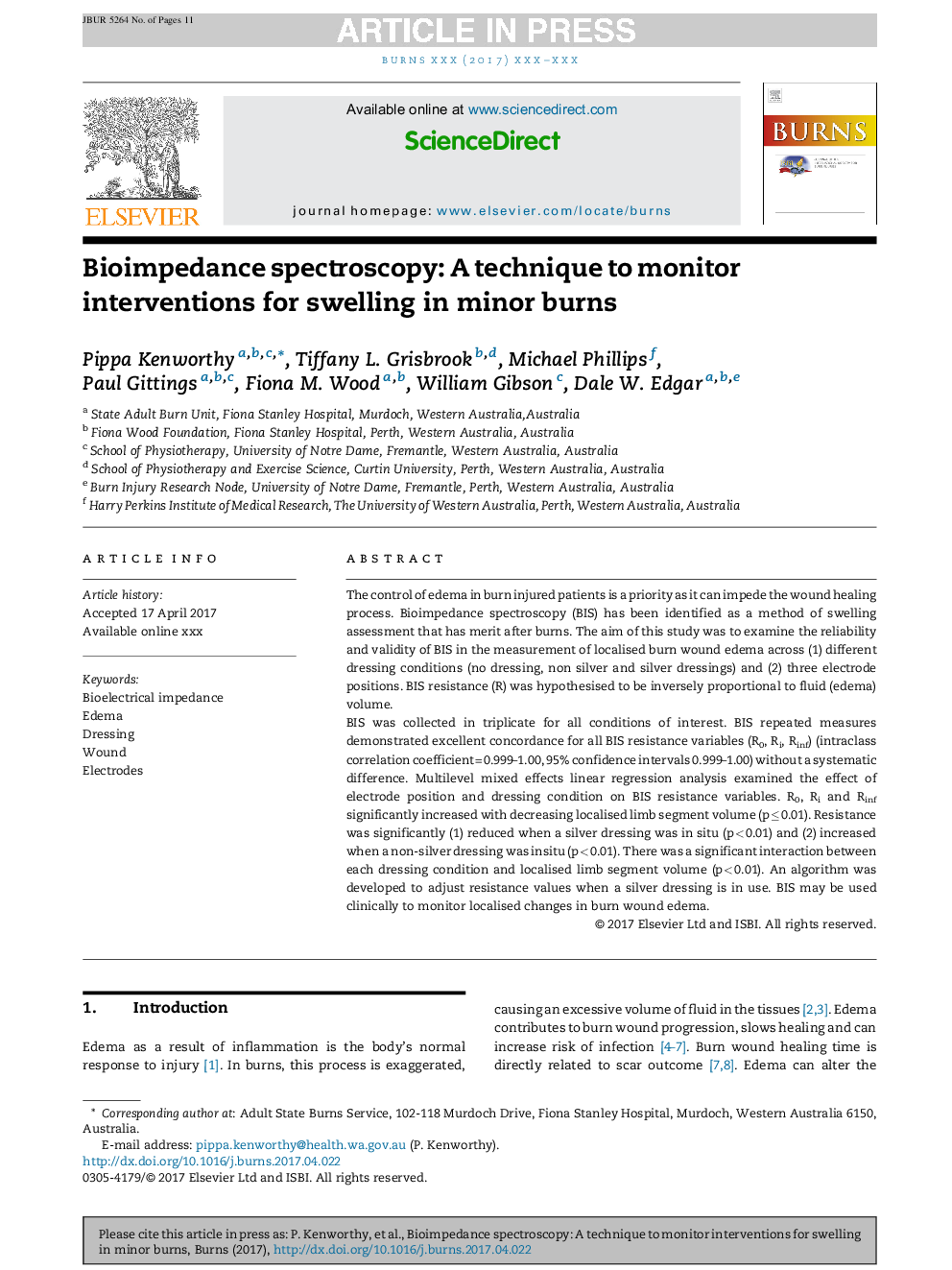| Article ID | Journal | Published Year | Pages | File Type |
|---|---|---|---|---|
| 8694825 | Burns | 2017 | 11 Pages |
Abstract
BIS was collected in triplicate for all conditions of interest. BIS repeated measures demonstrated excellent concordance for all BIS resistance variables (R0, Ri, Rinf) (intraclass correlation coefficient = 0.999-1.00, 95% confidence intervals 0.999-1.00) without a systematic difference. Multilevel mixed effects linear regression analysis examined the effect of electrode position and dressing condition on BIS resistance variables. R0, Ri and Rinf significantly increased with decreasing localised limb segment volume (p â¤Â 0.01). Resistance was significantly (1) reduced when a silver dressing was in situ (p < 0.01) and (2) increased when a non-silver dressing was insitu (p < 0.01). There was a significant interaction between each dressing condition and localised limb segment volume (p < 0.01). An algorithm was developed to adjust resistance values when a silver dressing is in use. BIS may be used clinically to monitor localised changes in burn wound edema.
Related Topics
Health Sciences
Medicine and Dentistry
Critical Care and Intensive Care Medicine
Authors
Pippa Kenworthy, Tiffany L. Grisbrook, Michael Phillips, Paul Gittings, Fiona M. Wood, William Gibson, Dale W. Edgar,
